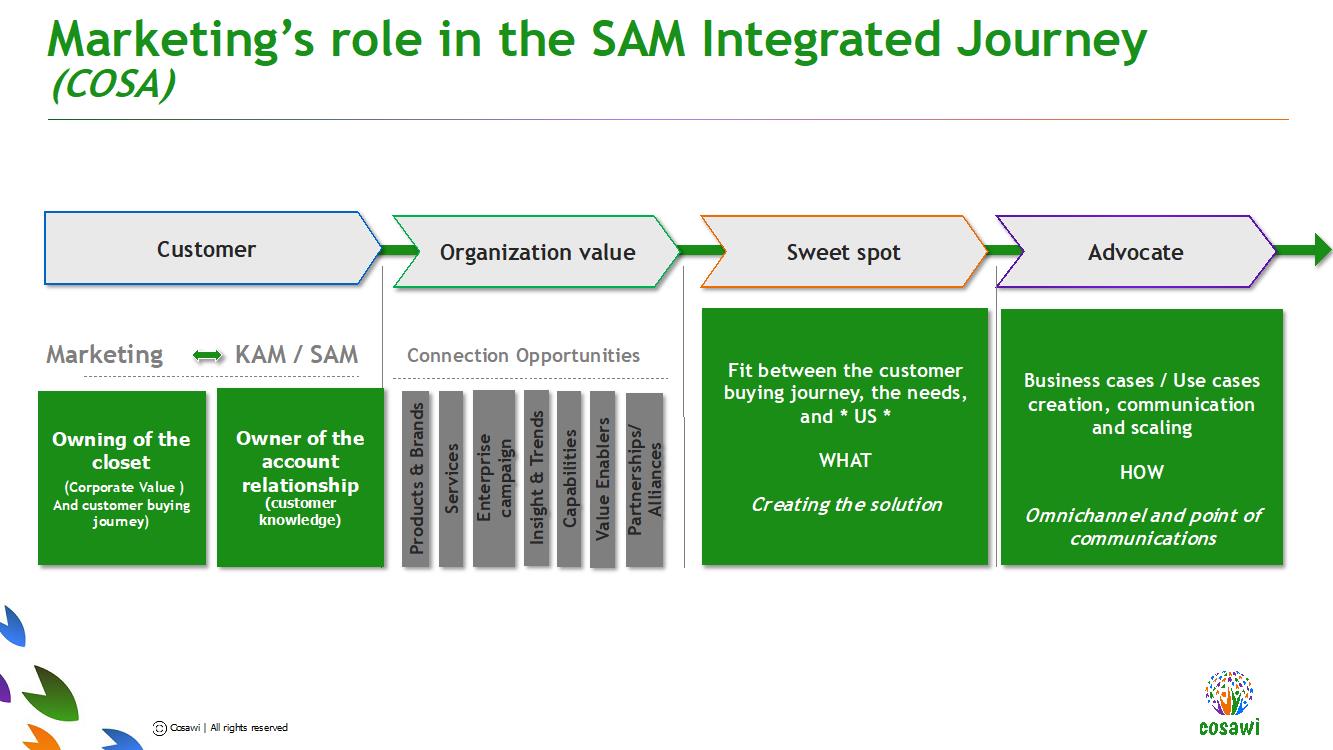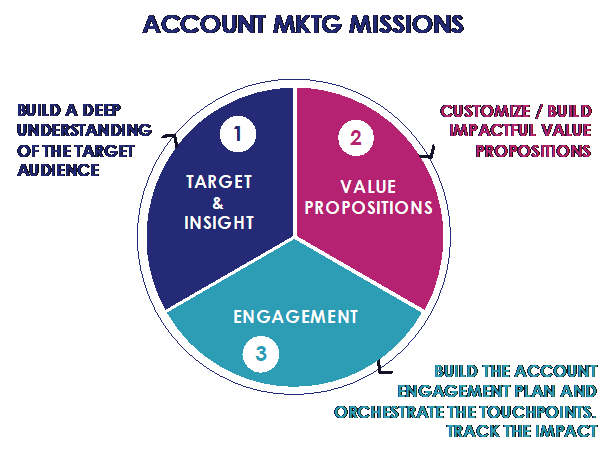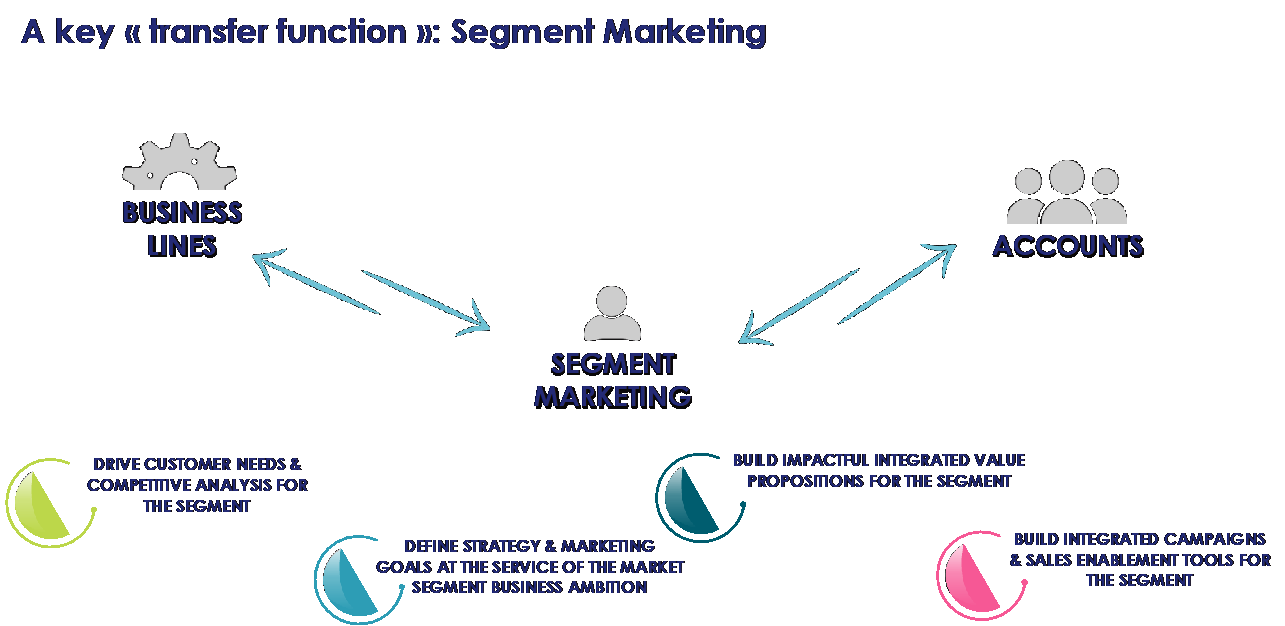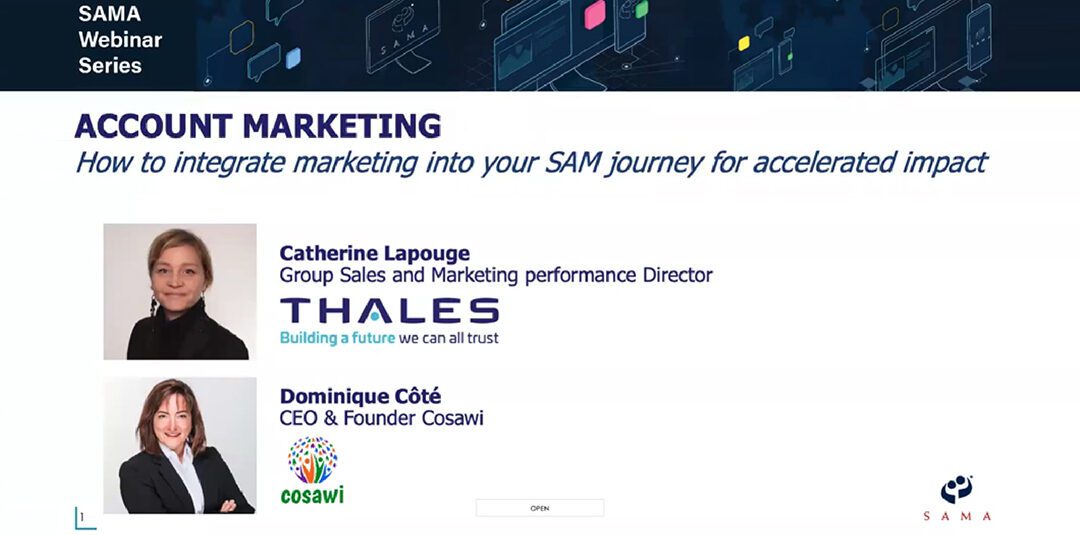By AKAM Board Members Olivier Rivière (Powering), Armelle Dupont (Vetropak), Dominique Coté (Cosawi)Exploring methodology, governance, and organisation Setting the framework for thinking about K/GAM When considering the design of a Key or Global Account Management...

Why isn’t Marketing in the KAM/ SAM journey ?
By Dominique Côté
CEO & Founder
Cosawi
Why isn’t Marketing in the KAM/ SAM journey ?
Customer-Led and Team-Enabled Marketing
In the evolving landscape of Key Account Management (KAM), Account-Based Marketing (ABM) has emerged as a cornerstone for driving customer-centric innovation. “Customer-Led and Team-Enabled ABM” represents a paradigm shift where Marketing is seamlessly integrated with KAM teams to deliver tailored solutions, enhance engagement, and drive value for strategic accounts. This requires more than the collaboration of marketing and sales but real integration and alignment with the outside-in mindset and ways of working, starting with the customer in mind.
However, integrating ABM into KAM journeys is not without its challenges. Think about your own company: how is your marketing integrated with your strategic account planning and work?
This article explores these roadblocks and insights for overcoming them, drawing from the work at Cosawi and years of practitioner experience and focusing on two areas:
- Roadblocks to customer-led and team-enabled account work
- Why key account managers hesitate to integrate ABM into their teams.
Key roadblocks to integrating ABM into KAM
- Mindset and organizational alignment
Marketing often lacks representation at the KAM table. Shifting the mindset to include Marketing as a partner from the outset of the KAM journey is critical. Emphasizing customer-led planning and team collaboration accelerates success in a world of customer-led and team-enabled KAM.
This shift requires broadening Marketing’s role beyond the customer buying journey to include insight generation and case studies and to create value creation for mutual growth and ROI.
With evolving skillsets required for KAMs and the complexity of customer needs, Marketing must step up as a co-orchestrator of the account strategy, leveraging insights, foresight, and data to support solution creation.
Integration challenges include aligning diverse internal processes and breaking silos between Marketing, Sales, and Account Management teams. To be successful and differentiate, we need a mindset shift, where marketing becomes the catalyst for the KAM journey. Strong leadership and cross-functional alignment are essential to fostering an integrated, customer-centric culture.
Considerations for success
- Foster a customer-led culture:
ABM must go beyond campaigns to become an integral part of the customer engagement process. Focusing on value-based solutions drives deeper customer relationships.
- Invest in skills and training:
Organizations often under-invest in tools, talent, and training for effective ABM. Investing in marketing talent with skills tailored to key accounts is crucial for customer-centric business transformation. Upskilling marketing and KAM teams to collaborate effectively and aligning their way of working is essential.
Training in data-driven decision-making, customer insight generation, and solution co-creation bridges skill gaps and enhances team integration and performance. Upskilling Marketing on the outside-in mindset and customer decision-making is critical to enabling personalized engagement plans, from strategy to optimized channel utilisation aligned on how the customer buys.
- Allocate resources appropriately:
It is puzzling how companies at the start of their KAM journey often forget about Marketing and bring them as an afterthought, or not at all, which creates tension between the KAM mindset and the Marketing one.
It is critical to have Marketing at the table as the KAM journey is ignited. A pilot with Marketing co-orchestrating and owning the engagement plan for each opportunity in a personalised manner for a few of the most important accounts should be able to show value and impact acceleration in strategic planning and execution. Start slow and bring Marketing along as the culture evolves.
- Ensure executive engagement:
Active support from senior leadership is necessary for strategic alignment, resource prioritization, and accountability. Executives must invest time to understand the customer and the strategy. They need to display enough humility to be coached by the KAM and account team, who are the owners of the customer strategy and plan for impactful engagement. Executive sponsorship or engagement is often the missing link and critical success factor
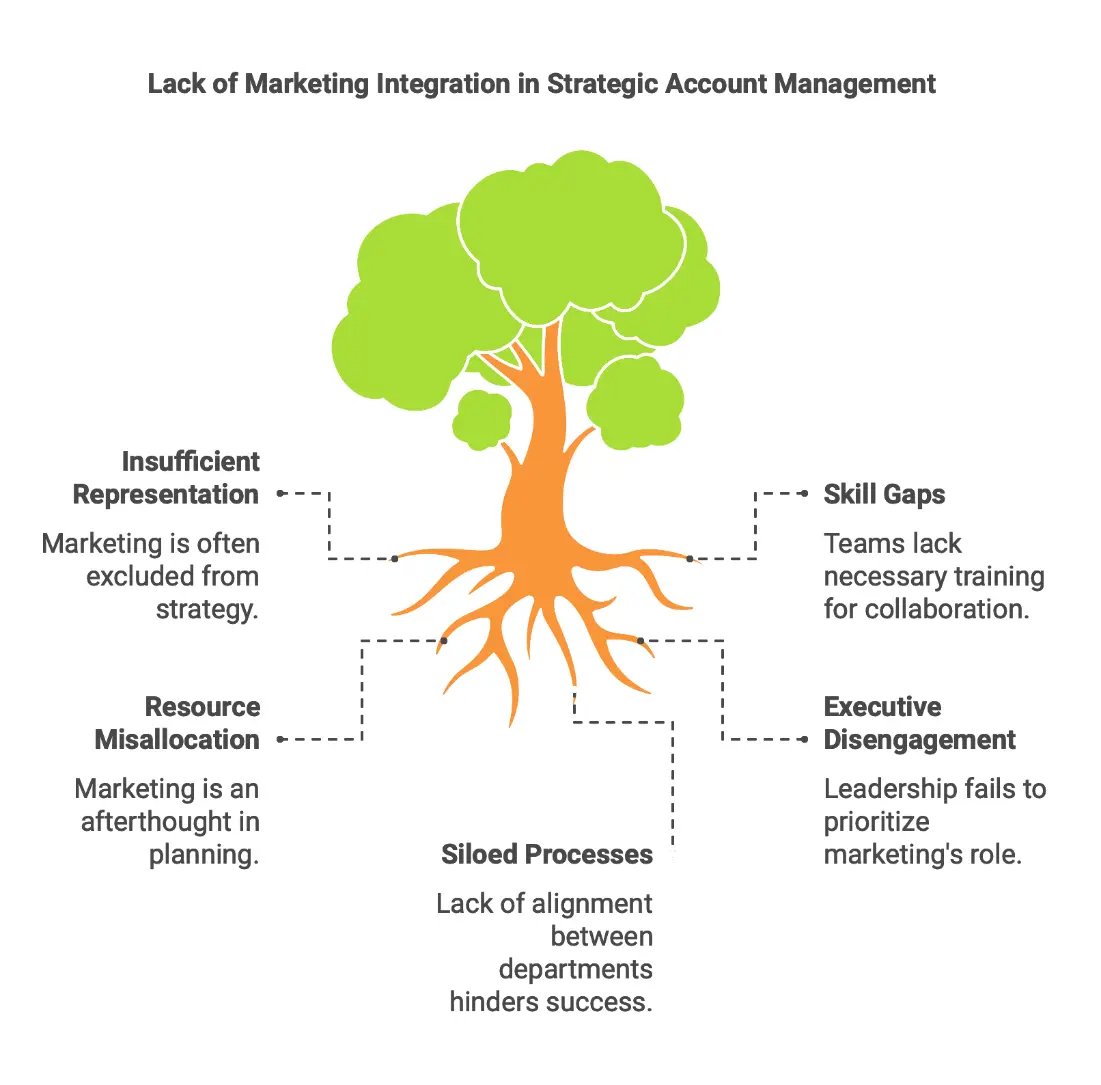
- Role clarity and collaborative execution
ABM’s success hinges on clear role definitions and seamless integration of Marketing and KAM professionals. Yet many organizations struggle to achieve it.
For instance, one company’s success stemmed from creating account-specific marketing roles, focusing on how customers bought rather than how products were sold. This fostered collaboration between Marketing and KAM teams, ensuring alignment on tailored value propositions and customer engagement strategies. A marketing connector role called Segment marketing also played a pivotal role in bridging product campaigns with account-level marketing strategies. The initiative demonstrated the impact of collaboration on customer-centricity and growth.
Key Actions
- Define account roles clearly:
Dedicated account marketing roles ensure focus and alignment. Start a pilot, bringing a marketing leader with the right mindset into the strategic account. That person will help to measure impact and prove value to the internal organisation, which will shift the Marketing mindset from an inside-out product push to an outside-in customer pull. Educate the whole organisation on the Why and What of ABM to ignite the journey and align people on this new way of working, prior to skilling up your marketing group.
- Quantify and personalize Value Propositions:
Marketing’s role in creating business cases, clarifying the value to communicate and enhancing account strategies strengthens its integration into KAM.
- Focus on customer engagement plan:
ABM should drive the opti-channel (omnichannel plan optimized and personalised) execution plan of the engagement plan created to provide value-based solutions that deepen relationships, accelerate differentiation, and support customer growth. Driven by the customer journey and decision-making process, the plan enables the team to have points of communication anchored to what matters the most to the customer that will build on each other’s.
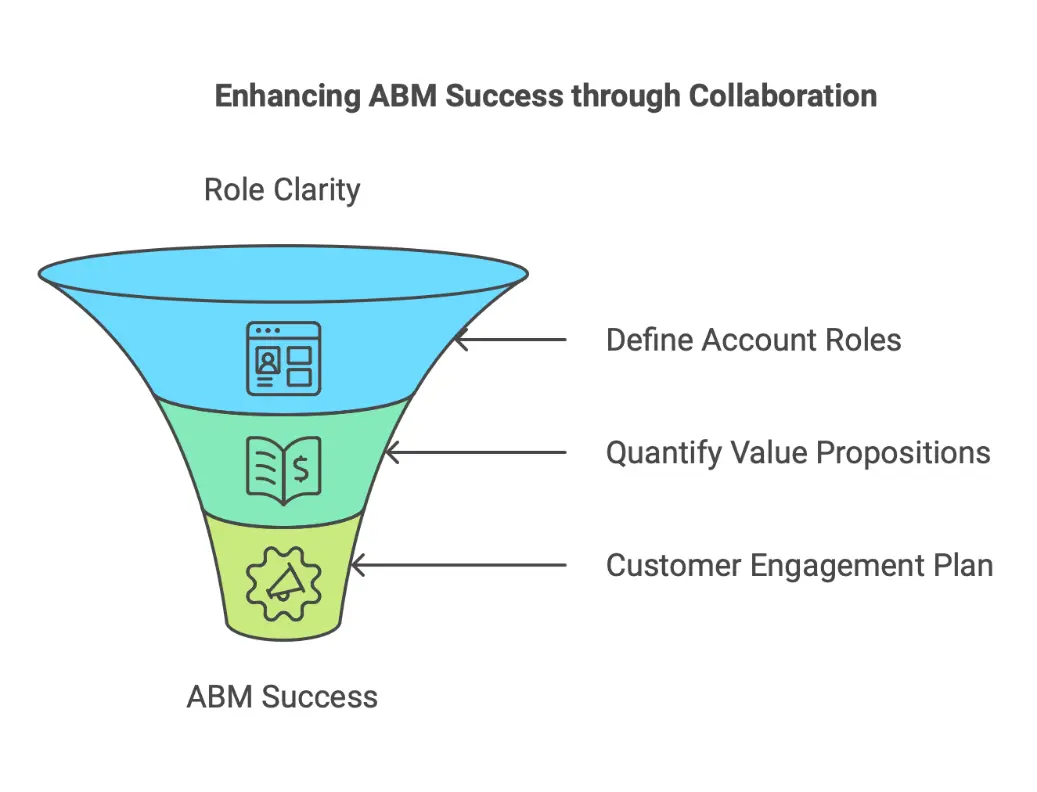
- Align goals and metrics
Aligning marketing KPIs with KAM objectives is critical to breaking down silos. Marketing often focuses on awareness and lead generation, while KAM emphasizes deep, account-specific engagement. Establishing clear, customer-centric KPIs ensures both teams prioritize shared goals.
Organizations must move beyond traditional quantitative KPIs by incorporating qualitative metrics that matter to customers. For example, understanding customer-defined success metrics for specific opportunities can anchor shared metrics, promoting collaboration and reducing tension.
Leverage data and AI
Advanced analytics and AI can centralize fragmented data and provide actionable insights. Simplifying complex customer worlds by targeting what matters most creates higher engagement and strengthens partnerships.
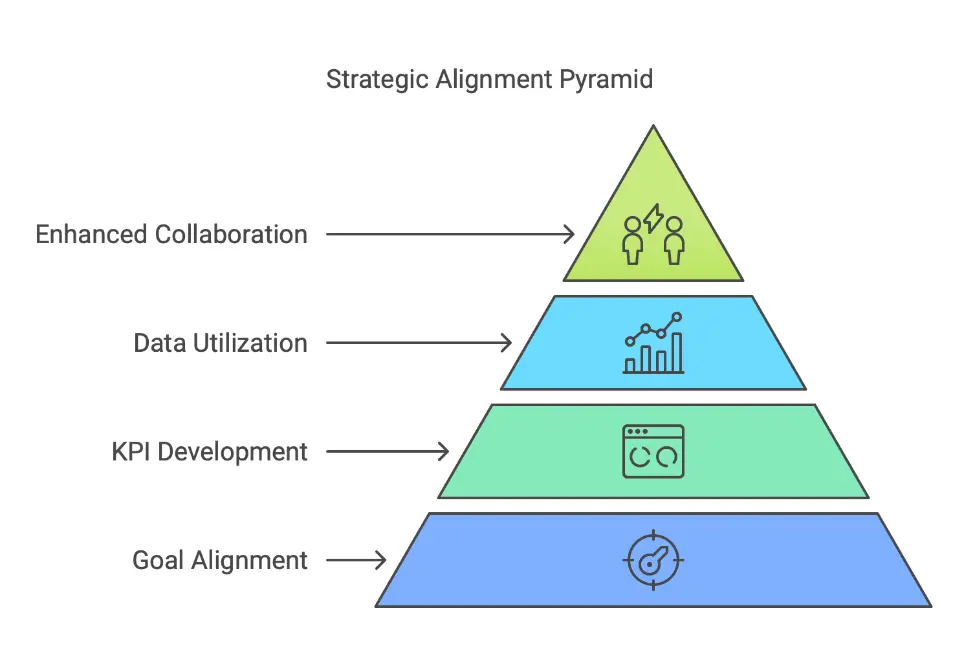
Why key account managers hesitate to integrate ABM into their teams
Despite the clear value of Marketing’s role in strategic account teams, many key account managers resist integration due to cultural, structural, and emotional factors.
- Perceived threat to power and knowledge
Key account managers often view themselves as the ultimate owners of customer relationships. Marketing’s involvement is sometimes seen as diluting their influence or introducing competing perspectives. This resistance stems from fears that Marketing’s contributions could overshadow the key account manager’s role or disrupt established client dynamics.
- Nostalgia for traditional ways of working
Some key account managers have built careers on relationship-focused sales models. Shifting to a collaborative model integrating ABM can feel like abandoning proven methods. A reliance on personal rapport over structured, data-driven insights creates resistance to change.
- Lack of trust in Marketing’s understanding of accounts
Key account managers often perceive Marketing as focused on generic campaigns rather than the unique complexities of key accounts. This undermines confidence in Marketing’s ability to contribute effectively, especially when the role of ABM is poorly defined.
- Fear of cultural misalignment
Marketing and KAM teams often operate under different timeframes and metrics. Marketing’s campaign-driven approach can clash with KAM’s long-term relationship-building mindset. Educating organizations on the role of ABM and aligning on its goals can ease these tensions.
- Fear of change
Resistance to change, rooted in nostalgia for traditional practices, often hinders ABM integration. Organizations must highlight how marketing’s data-driven insights complement KAM strategies, enabling better alignment and mutual success.
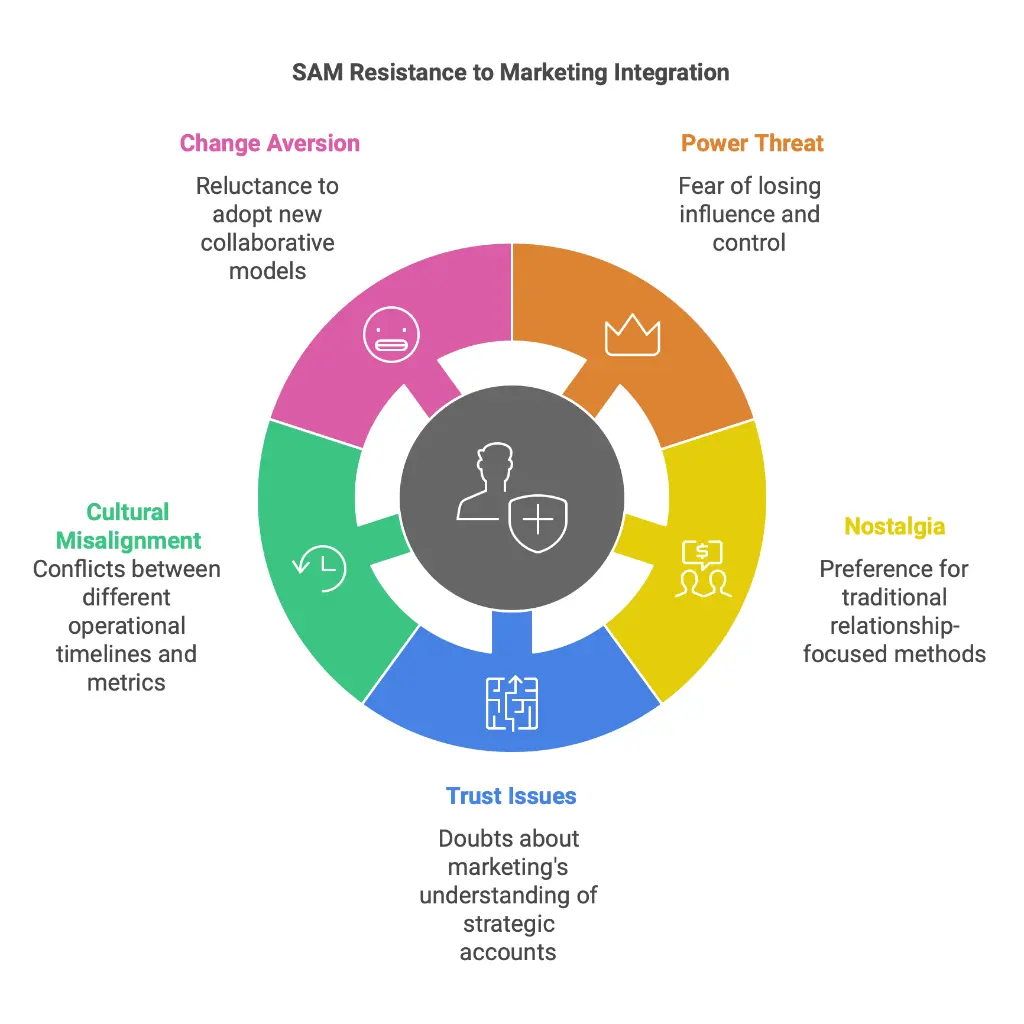
Overcoming barriers and bridging the gap
To overcome these challenges, organizations need to:
- Foster trust:
Build alignment between key account managers and Marketing through leadership-driven cultural shifts and training. Start small (pilot) and scale up.
- Clarify roles:
- Define roles and responsibilities in the account team for optimized execution of each opportunity. This will accelerate team performance and build confidence in integrated efforts.
- Showcase success stories:
Demonstrate how integrated account teams deliver impactful results.
By addressing these concerns, organizations can make the transition to customer-led and team-enabled strategic account management and ABM more seamless and impactful. KAM is not an individual sport — it is a team effort. Until organizations adopt a cross-functional, outside-in approach, they risk falling short of the mindset shift required for true KAM enablement.


